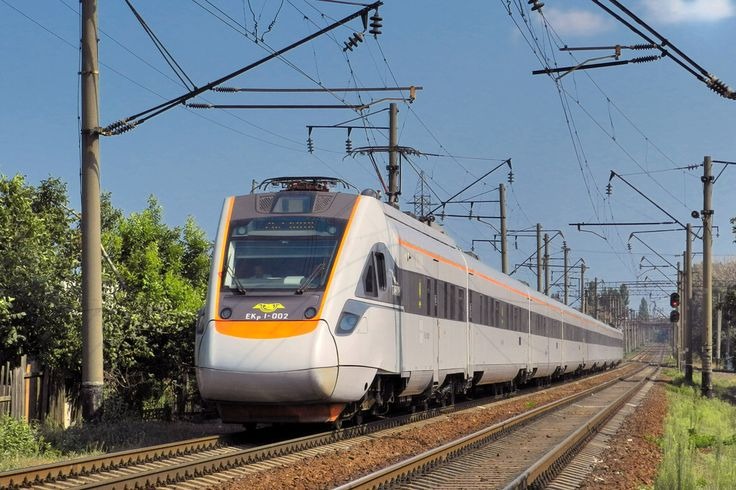
Our expert explores underrated lake-filled forests.
Lübeck’s exquisite main station, once bustling with departures, now sees few. Only one international route remains: to Szczecin, Poland. A handful of daily trains traverse a scenic 185-mile path through sparsely populated Holstein, Mecklenburg, and Pomerania. This historically contested region between Prussia and Sweden now offers a glimpse into lesser-known communities in remote eastern Germany.
Embarking from Lübeck’s famed Holstentor, a remarkable 15th-century city gate, marks the beginning of my eastward journey into Poland. The rail path, named the Stadttore-Linie (Town Gates Route), showcases numerous well-preserved defensive gates, exhibiting the prevalent Baltic architectural style known as “Backsteingotik” or brick Gothic in German.
At Lübeck’s Holstentor, one can ponder the city’s immense prosperity and influence during the Hanseatic era. Travelers exploring the Stadttore-Linie encounter charming small towns thriving on Hanseatic connections, boasting striking brick-gothic gates, although none rival the grandeur of Lübeck’s example. Notable gates adorn Teterow, Malchin, and Neubrandenburg. Interestingly, Szczecin, marking the route’s eastern end, diverges from the brick-gothic style with two prominent city gates showcasing a neo-baroque design.
Learning that the Szczecin-bound train offers minimal amenities, I gather Lübeck’s renowned marzipan for the journey. A brief stroll from the Holstentor leads me to Platform 1 at Lübeck station, where a modest two-car diesel train awaits, embarking on a nearly five-hour trip to Szczecin. Initially crowded, the train quickly thins out, suggesting few passengers are bound for Poland. “I’ve never journeyed that far,” remarks the train’s guard. “Actually, I’ve never been to Poland,” he adds as our train gracefully navigates Lübeck’s western and southern fringes, passing through St. Jürgen suburb, offering splendid vistas of Lübeck’s famed skyline to the left. Lübeck’s assortment of churches and distinctive redbrick warehouses, showcasing Hanseatic style, has secured its spot on UNESCO’s world heritage list.
Seven minutes into our trip, we traverse an unassuming trench that, until October 1990, delineated the border between the two German States—an inconspicuous yet significant marker of the iron curtain. From this point until roughly 10 minutes prior to reaching Szczecin, our leisurely train journey traverses the expanse of the former German Democratic Republic.
Our eastern trajectory deliberately veers away from the coast, steadfastly navigating inland terrain. I intermittently pause, reacquainting myself with communities I once knew during the early days following German reunification. We drift by lakes and woodlands, frequently catching glimpses of weathered farmsteads, abandoned stork nests, and skittish deer.
I spend the night in Güstrow, a town that has notably tidied up compared to three decades ago, yet it has experienced a 20% decline in its population since then (Hotel am Schlosspark offers doubles from €99 with breakfast). Although this small town once boasted four town gates, they have vanished over time. However, Güstrow’s allure lies elsewhere: within its imposing brick-gothic church floats a mysteriously captivating sculpture by Ernst Barlach. Crafted in 1927, this sculpture serves as a poignant memorial to those lost in the First World War. Suspended just above eye level, the sculpture depicts an angel bearing a reproachful gaze, strongly resembling the features of the artist Käthe Kollwitz. It stands as a symbol advocating for peace in a tumultuous world. Its haunting countenance intrigues me, sparking a desire to witness the near-identical Barlach sculpture in Cologne.
The night in Güstrow proves delightfully serene, and the following morning sees me back on the leisurely train, continuing eastward toward Poland. I take a break for breakfast in Teterow, home to a brick-gothic town gate older than even Lübeck’s. Teterow serves as the western threshold to a gently rolling landscape that proudly dubs itself Mecklenburg’s version of Switzerland. Despite the name, Mecklenburgische Schweiz holds no Swiss resemblance but certainly boasts undeniable beauty.
Similar to many rural areas in eastern Germany, this region sees limited visitors from distant places. However, being merely an hour or two away from Berlin, it’s highly regarded by Berliners for its rural allure and diverse landscapes. In Malchin, two women board the train and lament my oversight in not stopping there.
Grambow stands as Germany’s ultimate station before we transition into Poland. While the German-Polish border is predominantly demarcated by rivers like the Oder and the Neisse, nearing Szczecin reveals a patch of land on the Oder’s west bank that falls within Poland’s territory. Within minutes of crossing the border, our train winds through Szczecin’s outskirts, passing through residential areas and commercial hubs en route to the city’s primary station. From there, it’s a simple stroll to Szczecin’s two remaining gates, oddly set amidst bustling traffic.
Comparatively, Lübeck holds the upper hand in the realm of city gates. However, these gates serve merely as markers along a rail journey that proves to be a delightful slow-travel diversion, rekindling appreciation for the exquisite beauty of a flatland region deserving of wider recognition.
Travel Notes:
The train journey from Lübeck to Szczecin, a local service, offers minimal comforts despite a duration of 4 hours and 53 minutes. The Mecklenburg-Vorpommern Ticket (MVT) presents excellent value at €22 for the entire route (including the return journey). Valid for a day, the ticket allows stops, yet an overnight stay necessitates the purchase of a new MVT for the subsequent day. Global Interrail passes are applicable for the entire route.



